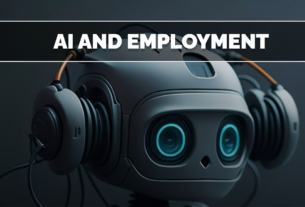In the fiercely competitive world of retail, the physical store remains a critical battleground. While e-commerce captures headlines, over 80% of global retail still happens within brick-and-mortar walls. Yet, optimizing the tangible experience of a physical store has historically been a challenge, often relying on manual, error-prone, and labor-intensive processes. This is especially true for perhaps the most crucial element of a store’s operation: shelf management.
Enter AI-Powered Shelf Monitoring – a silent revolution leveraging computer vision and machine learning to bring unprecedented levels of efficiency, accuracy, and insight to retail operations. This technology is moving beyond basic inventory checks to create dynamic, intelligent store environments that understand and react to real-time conditions.
The Hidden Costs of Suboptimal Shelves
Before delving into the AI solution, it’s crucial to understand the pervasive problems that traditional shelf management methods fail to address effectively:
- Out-of-Stocks (OOS) / Phantom Inventory: Products are either truly unavailable or recorded as in-stock but are not on the shelf. This is the single largest driver of lost sales in retail, with estimates ranging from 4-8% of potential revenue. Customers frustrated by OOS products often leave empty-handed or switch brands.
- Planogram Non-Compliance: Retailers and brands invest heavily in planograms – visual diagrams that dictate precise product placement, facings, and adjacencies to maximize sales and brand visibility. Manual checks rarely achieve 100% compliance, leading to suboptimal merchandising and confused customers.
- Pricing Errors: Incorrect price tags, missing labels, or discrepancies between shelf price and POS systems erode trust and incur fines.
- Cluttered/Disorganized Shelves: A messy shelf deters shoppers, makes products harder to find, and reflects poorly on store standards.
- Spoilage/Expiration (especially in Fresh): In grocery, managing expiration dates for fresh produce or perishable goods is a massive manual task, leading to significant waste and lost revenue.
- Labor Inefficiency: Store associates spend countless hours manually checking shelves, a repetitive task that takes them away from higher-value activities like customer service or strategic merchandising.
These issues collectively contribute to millions, if not billions, in lost revenue annually for retailers worldwide.
The Mechanics of AI-Powered Shelf Monitoring
AI-powered shelf monitoring typically involves a combination of hardware and software working in tandem:
- Data Capture (The Eyes):
- Fixed Overhead Cameras: Strategically placed cameras (often existing security cameras, or purpose-built IoT devices) continuously capture images or video streams of shelves.
- Robots/Automated Scanners: Autonomous robots navigate aisles, capturing detailed images of shelves. These robots can work during off-peak hours or alongside human staff.
- Handheld Devices: Store associates or merchandisers can use AI-enabled smartphones or tablets to scan shelves, particularly for auditing or spot-checking.
- Data Transmission: Images/video feeds are either processed directly on the device (Edge AI) or sent to a local gateway/server or the cloud for analysis. Edge processing is crucial for real-time alerts and reducing bandwidth strain.
- AI Analysis (The Brain):
- Object Detection & Recognition: Machine learning models are trained to identify individual products, their SKUs, brands, and even variations (e.g., different flavors of a beverage).
- Counting & Facing: The AI counts the number of units present and confirms their “facings” (the number of product fronts visible to the customer).
- Anomaly Detection: Algorithms identify deviations from the ideal state:
- Out-of-Stock: Missing products.
- Misplaced Products: Items not in their designated planogram position.
- Incorrect Pricing: Discrepancies between expected and detected price labels.
- Clutter/Damage: Identifying foreign objects or damaged packaging.
- Expiration Dates: In advanced systems, AI can read expiration dates on perishable goods.
- Actionable Insights & Alerts (The Action):
- Real-time Alerts: Store managers and associates receive immediate notifications on their devices (smartphones, tablets) about critical issues like OOS products, prompting rapid replenishment.
- Task Prioritization: The system generates prioritized task lists for staff, directing them to specific aisles and shelves where intervention is most needed.
- Performance Analytics: Retailers gain access to dashboards and reports detailing compliance rates, OOS trends, planogram effectiveness, and labor utilization. This data informs strategic decisions for merchandising, inventory ordering, and staff training.
Transformative Benefits for Retailers
The adoption of AI-powered shelf monitoring offers a cascade of benefits:
- Boosted Sales & Revenue: By drastically reducing out-of-stocks and ensuring optimal product visibility, retailers can recapture significant lost sales.
- Enhanced Customer Experience: Shoppers find what they need, shelves are organized, and pricing is accurate, leading to higher satisfaction and loyalty.
- Increased Operational Efficiency: Automating tedious shelf checks frees up store associates to focus on customer service, upselling, cross-selling, and more strategic merchandising tasks.
- Improved Inventory Accuracy: Real-time visibility into shelf conditions helps refine inventory management systems, preventing phantom inventory and reducing excess stock.
- Optimized Merchandising & Planograms: Data-driven insights reveal which planograms are most effective and where adjustments are needed, allowing for continuous optimization. Brands can ensure their products are displayed exactly as intended.
- Reduced Waste (especially in Grocery): AI can flag expiring products, enabling timely markdowns or removal before spoilage, significantly cutting down on food waste.
- Stronger Brand-Retailer Relationships: Brands gain objective data on their in-store execution, fostering better collaboration with retailers and ensuring their products are always presented at their best.
- Fraud and Theft Deterrence: While not its primary function, consistent monitoring can contribute to deterring opportunistic theft or identifying unusual activity patterns.
The Future of the Intelligent Shelf
The evolution of AI-powered shelf monitoring is just beginning. Future developments include:
- Predictive Replenishment: AI models that not only detect OOS but also predict when a product will run out based on sales velocity and foot traffic, triggering proactive restocking.
- Personalized Merchandising: Dynamic planograms that adjust based on real-time customer demographics or local events.
- Integration with Robotics: More sophisticated autonomous robots capable of not just scanning but also minor restocking tasks.
- Enhanced Shopper Behavior Insights: Analyzing how shoppers interact with shelves – where they look, what they touch, and their paths through aisles – to further optimize store layouts and product placement.
In essence, AI-powered shelf monitoring transforms the static, often chaotic physical retail shelf into an intelligent, responsive, and data-rich asset. It’s no longer just a place to display products, but a dynamic data point that actively contributes to a store’s efficiency, profitability, and customer satisfaction, truly bringing the physical store into the digital age.



